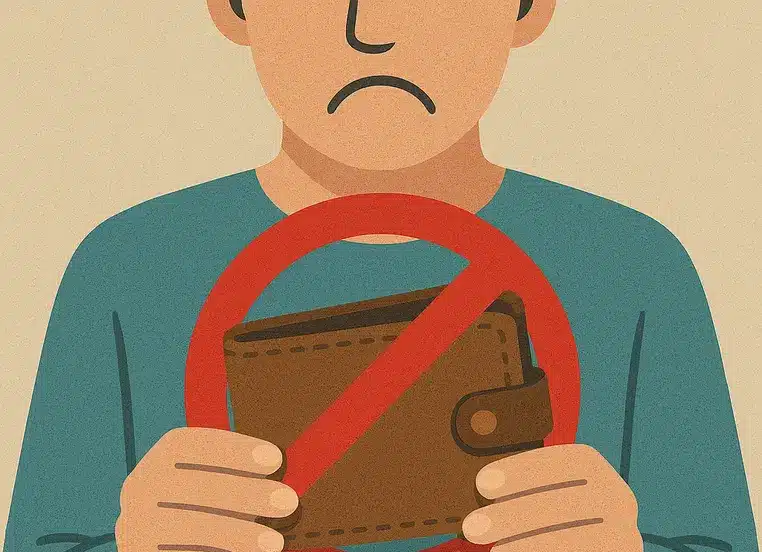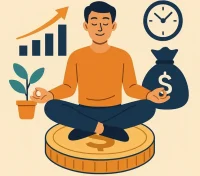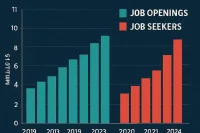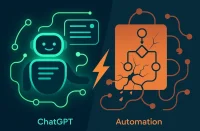Americans closing their wallets — the real story
Americans closing their wallets isn’t just about economic uncertainty—it’s about hitting absolute debt limits. Recent Federal Reserve data shows credit card spending has been flat for months, but this isn’t the positive sign some outlets claim. With consumer debt hitting a record $5.06 trillion and credit card debt at $1.31 trillion, Americans are maxed out, not confident. The 5.45% decline in revolving credit suggests households have hit their borrowing limits, not that they’re choosing to spend less.
The debt ceiling reality
Record-breaking consumer debt levels
As of August 2025, total US consumer debt reached $5.06 trillion—a new all-time high. This includes $1.31 trillion in credit card debt and $3.76 trillion in non-revolving credit like auto loans, student loans, and personal loans. The revolving credit portion fell 5.45% in the most recent month, which is rare and likely reflects households hitting their limits rather than voluntarily paying down balances.
Why Americans can’t spend more
When you have five credit cards and three are close to maxed out, you become very hesitant to use the remaining two. These become emergency reserves—”break glass in case of emergency” credit cards. Americans closing their wallets isn’t about choice; it’s about hitting the wall of available credit.
The inflation spending trap
Forced spending vs voluntary spending
Retail spending increases aren’t signs of economic confidence—they’re signs of inflation forcing people to spend more for the same goods. People aren’t voluntarily spending more; they’re spending more because prices are higher. The amount people spend is actually higher than official inflation numbers suggest, making this a forced spending increase, not an economic boom.
Buy now, pay later for groceries
The rampant use of buy now, pay later services for groceries shows how stretched American households are. When you’re financing basic necessities like food, you’re not in a position to increase discretionary spending. This is survival spending, not prosperity spending.
Non-revolving credit tells the real story
Essential purchases continue
While credit card spending flatlines, auto and student loans rose 2% in August, continuing their upward climb. This shows borrowers are still financing major purchases despite higher interest rates—but these aren’t discretionary purchases. People need cars to get to work and pick up kids from school. These are essential expenses, not luxury spending.
Higher interest rates as deterrents
With credit card interest rates around 22% and people paying record amounts of interest, there’s a strong deterrent to continue spending on credit cards unless absolutely necessary. Americans closing their wallets on discretionary items while maintaining essential purchases shows financial stress, not economic confidence.
Job security fears driving spending cuts
Workforce anxiety at recession levels
Consumer sentiment has dropped to levels seen during the 2008 recession. Most people in recent surveys say they’re worried about losing their jobs and finding work if they’re laid off. This fear drives conservative spending behavior—people hoard available credit for emergencies rather than spending it on non-essentials.
Tighter lending standards compound the problem
Higher debt-to-income ratios make it harder to borrow when you need it most. Banks are tightening lending standards, making it more difficult for already-stretched households to access additional credit. This creates a perfect storm of maxed-out credit and limited access to more.
Stability Starts with the Right Hire
In times of uncertainty, workers want security—and employers need reliable talent more than ever. Posting your job on WhatJobs ensures you reach qualified candidates actively seeking stability and growth. Build a resilient workforce today to weather tomorrow’s challenges.
Post a Job Free for 30 Days →Why economists misread the data
Spending increases aren’t prosperity
Economists often interpret spending increases as economic strength, but when spending rises because of inflation rather than increased purchasing power, it’s actually a sign of economic stress. People spending 4% more at stores this year isn’t because they have more money—it’s because everything costs more.
The GDP dependency problem
With 70% of US GDP derived from consumer spending, a sustained slowdown in credit card growth points to weaker spending ahead. If people are seriously tapped out and spending slows significantly, GDP will decline. Americans closing their wallets has broader economic implications than just individual household budgets.
The emergency reserve mentality
Last resort credit preservation
When households are maxed out on most credit lines, they preserve remaining available credit for true emergencies. This creates a psychological barrier to spending even when credit is technically available. The fear of being completely without options drives conservative financial behavior.
Essential vs discretionary spending
Americans are still spending on essentials—cars, groceries, housing—but cutting back on discretionary items. This selective spending shows financial stress rather than economic confidence. People are prioritizing survival over lifestyle maintenance.
What the data really means
Debt saturation, not economic confidence
The flat credit card spending isn’t because Americans are confident in the economy—it’s because they’ve hit their debt limits. With record debt levels and high interest rates, there’s simply no more room to borrow for discretionary spending. This is debt saturation, not economic optimism.
Warning signs for broader economy
When 70% of GDP depends on consumer spending and consumers are maxed out, it creates a dangerous economic situation. Americans closing their wallets could trigger broader economic slowdowns as businesses dependent on consumer spending face reduced demand.
The real economic picture
Forced spending vs voluntary spending
Distinguishing between forced spending (due to inflation) and voluntary spending (due to increased prosperity) is crucial for understanding the real economic picture. Current spending patterns show forced spending on essentials while discretionary spending flatlines—a sign of economic stress, not strength.
Debt-driven economic growth
Much of the economic growth in recent years has been debt-driven rather than income-driven. When debt limits are reached, this artificial growth becomes unsustainable. Americans closing their wallets reveals the underlying weakness in debt-dependent economic models.
FAQs
Q: Why are Americans closing their wallets right now?
A: Americans closing their wallets is due to hitting debt limits ($5.06 trillion total debt), job security fears, and 22% credit card interest rates making borrowing unsustainable for discretionary spending.
Q: What does Americans closing their wallets mean for the economy?
A: Americans closing their wallets threatens the economy because 70% of US GDP depends on consumer spending. When consumers are maxed out on debt, spending slows and GDP declines.
Q: Is Americans closing their wallets a sign of economic confidence?
A: No, Americans closing their wallets reflects debt saturation and financial stress, not economic confidence. People are preserving remaining credit for emergencies rather than spending on non-essentials.
Q: How long will Americans closing their wallets last?
A: Americans closing their wallets will likely continue until debt levels decrease, interest rates fall, or incomes rise significantly. With record debt and high rates, this could persist for years.
Live example — user point of view
I’m a perfect example of Americans closing their wallets. I have $15,000 in credit card debt across three cards, all near their limits. My fourth card has $2,000 available, but I won’t touch it—that’s my emergency fund. I’m still buying groceries and paying my car loan, but I haven’t bought anything non-essential in months. I’m terrified of losing my job and having no credit available. I used to spend $200 monthly on entertainment and dining out; now it’s zero. I’m not choosing to spend less—I literally can’t afford to spend more without risking financial disaster.




